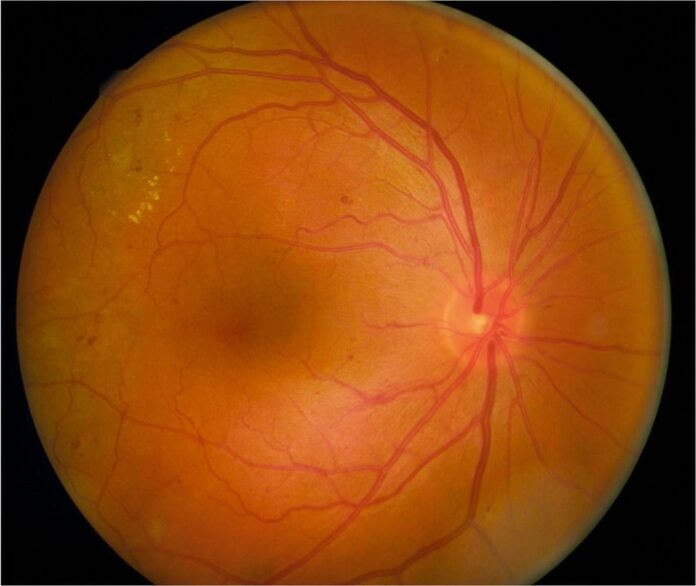
Macular edema is a serious condition that affects the macula, the central part of the retina responsible for sharp, central vision. If left untreated, it can lead to vision loss and even blindness. Recognizing the warning signs and symptoms of macular edema is crucial in order to seek early intervention and prevent further damage to the eye.
In this article, we will discuss the key symptoms of macular edema that you should be aware of and the importance of seeking medical attention if you experience any of these warning signs.
What is Macular Edema?
First, let’s understand what macular edema actually is. Macular edema is the swelling of the macula, which is caused by the buildup of fluid in the macular region of the eye. This can result in distorted or blurry vision, as well as a decrease in central vision. Macular edema can be caused by various factors, including diabetes, age-related macular degeneration, and retinal vein occlusion.
Warning Signs and Symptoms of Macular Edema
If you are experiencing any of the following symptoms, it is important to consult with an eye care professional for a comprehensive eye exam to determine if you have macular edema:
1. Blurry or distorted central vision: One of the most common symptoms of macular edema is blurry or distorted central vision. You may notice that things appear blurry or out of focus when you are looking straight ahead. This can make it difficult to read, drive, or recognize faces.
2. Dark or blank spots in your central vision: Another warning sign of macular edema is the presence of dark or blank spots in your central vision. These spots may obstruct your ability to see clearly and can make it challenging to perform everyday tasks.
3. Colors appear washed out or faded: If you notice that colors appear washed out or faded, this could be a sign of macular edema. The buildup of fluid in the macular region can affect your color perception, causing colors to appear less vibrant than usual.
4. Difficulty reading or seeing fine details: Macular edema can make it challenging to read or see fine details. You may find it difficult to focus on small print or distinguish between objects that are close together. This can impact your ability to work, drive, or participate in leisure activities.
5. Straight lines appear wavy or distorted: A common symptom of macular edema is the appearance of straight lines as wavy or distorted. If you notice that lines that should be straight, such as the edges of a door or window frame, appear curved or wavy, this could indicate macular edema.
6. Gradual loss of central vision: Over time, untreated macular edema can lead to a gradual loss of central vision. This can progress to the point where you may only have peripheral vision remaining, making it difficult to see objects directly in front of you.
7. Difficulty recognizing faces or objects: Macular edema can also affect your ability to recognize faces or objects. You may find it challenging to identify familiar faces or objects, even when they are close by. This can be distressing and impact your quality of life.
8. Increased sensitivity to light: Some individuals with macular edema may experience increased sensitivity to light. You may find that bright lights or glare are bothersome and can cause discomfort or pain in your eyes.
Importance of Early Detection and Treatment
Early detection and treatment of macular edema are crucial in order to preserve your vision and prevent further damage to the eye. If you are experiencing any of the warning signs and symptoms mentioned above, it is important to seek medical attention promptly. Your eye care professional will perform a comprehensive eye exam to diagnose macular edema and develop a personalized treatment plan based on your individual needs.
Treatment options for macular edema may include medications, such as anti-VEGF injections or corticosteroids, laser therapy, or surgical interventions. Your eye care professional will discuss the risks and benefits of each treatment option and work with you to determine the best course of action to manage your condition.
In addition to seeking medical treatment, there are steps you can take to help protect your vision and reduce your risk of developing macular edema. These include maintaining a healthy lifestyle, managing underlying health conditions such as diabetes or hypertension, protecting your eyes from UV exposure, and getting regular eye exams to monitor the health of your eyes.
Conclusion
Macular edema is a serious condition that can lead to vision loss and blindness if left untreated. Recognizing the warning signs and symptoms of macular edema is crucial in order to seek early intervention and prevent further damage to the eye. If you are experiencing blurry or distorted central vision, dark spots in your vision, or difficulty reading or recognizing objects, it is important to consult with an eye care professional for a comprehensive eye exam.
Early detection and treatment of macular edema are essential in preserving your vision and maintaining your quality of life. By recognizing the warning signs and seeking prompt medical attention, you can take proactive steps to protect your vision and reduce your risk of developing complications associated with macular edema. Remember, your eye health is important, so don’t hesitate to reach out to a professional if you have concerns about your vision.












